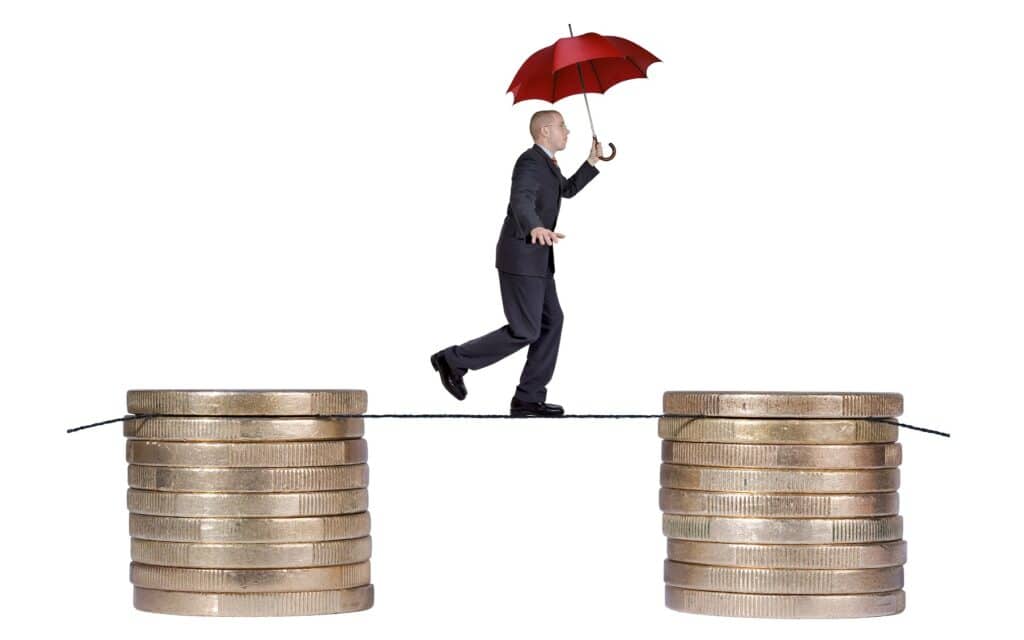Part 2 in a Series
This is the second in a series of posts related to enhancing business owners’ understanding of cost of capital. The first post, titled, Understanding Cost of Capital and Value Enhancement, addressed the importance of incorporating cost of capital into day-to-day investment and operating decisions.
The cost of capital of any enterprise is comprised of two key elements:
- Equity capital – represents infusions and contributions of equity capital into the business in exchange for direct ownership interest in the business
- Debt capital – refers to the positions of monetary lenders such as banks, etc. that loan money to the business; no direct ownership in the business is provided to suppliers of debt capital in exchange for the loans.
Together, these two primary sources of capital are often referred to as “invested capital.” To be sure, there are many variations of the construct of invested capital among companies but for purposes of these discussions, the two primary sources are the most relevant aspects of invested capital. Moreover, most variations are generally modifications of these two primary elements.
The payback on debt capital is simply interest. The interest rate, of course, is set by virtue of lender risk assessment of the borrowing company. However, the actual cost of the debt capital is not the gross interest cost set by the lender but, rather, the “net” cost of interest after factoring in the federal and state income tax impact of deducting the interest in computing the company’s taxable income. This can be an important consideration in understanding the true cost of debt.
By way of an example, assume a company is able to borrow money at a 4½% interest rate. If the company’s federal and state income tax rate is 33%, the true cost of debt is just 3%. In other words, the actual cash inflows from reduced federal and state income tax liabilities effectively reimburse the company for 1½% of the interest paid to the lender.
The payback on equity capital is more complex. It is also more costly. The reason that equity returns are so much higher than the cost of debt is wholly attributable to the risk of being an equity capital holder versus a debt capital holder. As a holder of equity capital, no return on investment is available until all other parties with greater levels of security have been paid. Such a scenario is in stark contrast to the risk associated with the debt capital holders as they hold a higher level of claim against the borrower’s assets and are often secured as well by underlying assets and personal guarantees.
The cost of equity capital is generally determined through a modeling process, though that is not always the case. In certain situations, business owners and management will set hurdle rates based on desired economic returns associated with various investment opportunities. In these cases, the cost of equity hurdle rates replace actual costs of capital, as the purpose of the exercise is to assess whether the pending opportunity can meet the desired parameters of the business owners and management. In such situations, the cost of “next dollar financing” often takes priority.
The cost of equity capital is based on the risk found to be associated with the receipt of future economic benefit streams (usually cash flows). Thus, financial modeling, particularly under the income approach to valuation, (download seminar materials for complete explanation) captures both sources of equity returns.
The most common methodology for determining the cost of equity capital is to build a “discount rate.” A discount rate measures the expected risk of actually achieving the projected economic benefit streams in the “amounts” projected and at the “dates” that those economic benefit streams are expected to occur. In other words, a discount rate reflects the inherent risk in attaining the projected future economic benefit streams (generally, free cash flows).
It is important to understand that discount rates are almost always the result of expert development under a mechanical construction process. Click here for more detail about the construction process and what is commonly accepted within the financial services industries, including those areas where expert judgment plays a more substantial role.
It is not hard to see that the cost of equity capital far exceeds the cost of debt capital. The important concept to grasp, however, is that the overall weighted cost of capital (WACC) is the actual cost of capital for any company. The WACC simply weights the two separate costs of capital at their respective market values at any particular date of measurement to provide that weighted average. WACC determinations will be discussed in a future posting in this series.
In the interim, should you have questions, or comments, please contact Bob Grossman at 412-338-9300.
View other posts in this series:








